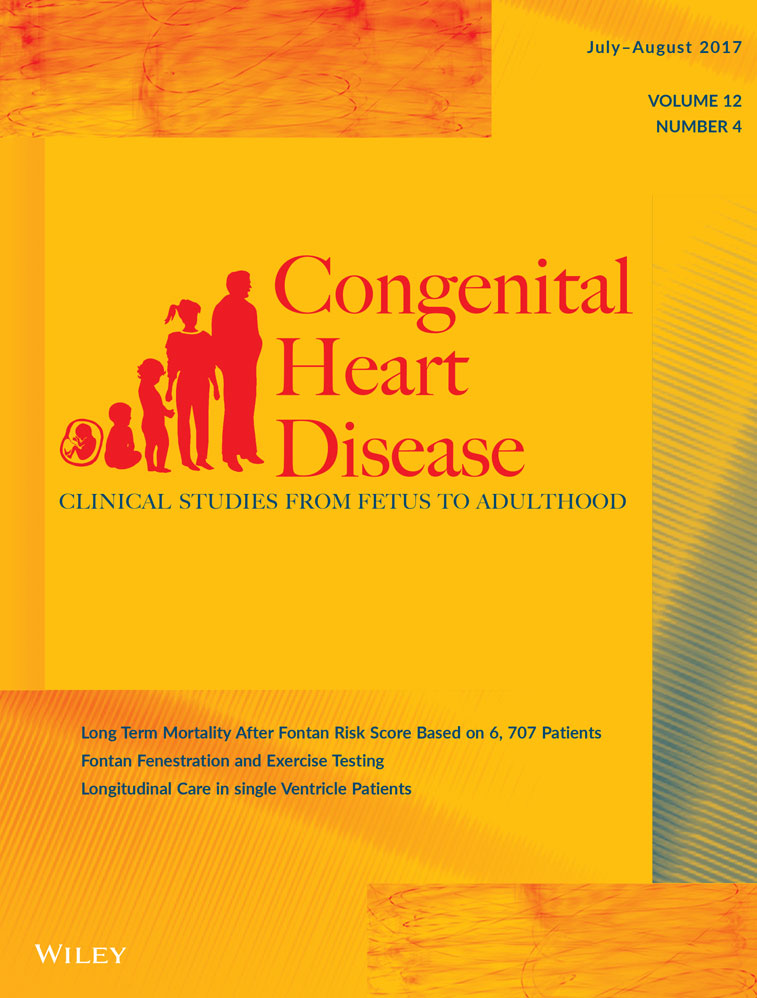Effects of persistent Fontan fenestration patency on cardiopulmonary exercise testing variables
Abstract
Cardiopulmonary exercise testing (CPET) aids in clinical assessment of patients with Fontan circulation. Effects of persistent fenestration on CPET variables have not been clearly defined. Associations between fenestration and CPET variables at anaerobic threshold (AT) and peak exercise were explored in the Pediatric Heart Network Fontan Cross-Sectional Study cohort. Fenestration patency was associated with a greater decrease in oxygen saturation from rest to peak exercise (fenestration −4.9 ± 3.8 v. nonfenestration −3 ± 3.5; P < .001). Physiological dead space at peak exercise was higher in fenestrated v. nonfenestrated (25.2 ± 16.1 v. 21.4 ± 15.2; P = .03). There was a weak association between fenestration patency and maximal work and heart rate. Fenestration patency was also weakly correlated with oxygen pulse, work and VE/VCO2 at AT. The effect of persistent fenestration on CPET measurements was minimal in this study, likely due to the cross-sectional design.




